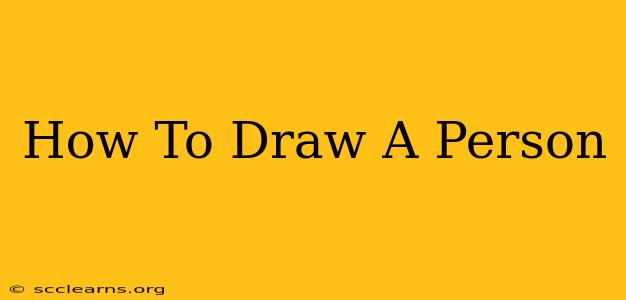Drawing a person can seem daunting, but breaking it down into manageable steps makes it achievable for everyone, regardless of skill level. This guide will walk you through the fundamentals of human anatomy and posing, helping you create believable and expressive figures.
Understanding Basic Proportions
Before diving into details, grasping the basic proportions of the human body is crucial. While individual variations exist, a simplified approach helps beginners. A common method uses the head as a unit of measurement:
- Head: One unit.
- Torso: Approximately two to three units (slightly shorter than the legs).
- Legs: Approximately three to four units (including thighs and calves).
- Arms: Approximately two to three units (reaching mid-thigh when arms are down).
Remember, these are guidelines, not rigid rules. Practice sketching these proportions lightly before adding detail.
The Importance of Observation
Accurate observation is key. Study photographs, real-life subjects, or even yourself in a mirror. Pay attention to the subtle variations in body type and posture. Don't be afraid to make mistakes – they're part of the learning process!
Mastering Basic Shapes
Start by sketching simple shapes to represent the body's major parts:
- Head: Oval or circle.
- Torso: Cylinder or slightly elongated rectangle.
- Legs: Cylinders or slightly tapered rectangles.
- Arms: Cylinders.
This approach helps establish the overall pose and proportions before adding details. Think of this as building a simplified skeleton for your figure.
Constructing the Skeleton
Once the basic shapes are in place, refine them to suggest the underlying skeletal structure. Pay attention to the joints – knees, elbows, shoulders, hips – and how they allow for movement. This will give your drawing a more realistic feel and prevent stiff poses.
Adding Details: Muscle Structure and Clothing
With the skeleton established, you can begin adding muscle mass and clothing.
- Muscles: Start by lightly suggesting the major muscle groups. You don't need to be an anatomy expert, but understanding where muscles bulge and recede will add realism. Focus on the key areas like biceps, triceps, chest, and thighs.
- Clothing: Consider how clothing drapes and folds over the body. Observe how fabric clings to or hangs from the underlying form. This will add depth and realism to your drawings.
Refining the Details
Gradually add details such as facial features, hands, and feet. These can be initially sketched simply and refined later. Remember that practice makes perfect!
Practice Exercises to Improve Your Skills
- Gesture Drawing: Focus on capturing the movement and energy of the pose. Spend only a few minutes on each sketch.
- Figure Drawing from Life: Drawing from a live model is invaluable. It trains you to observe and respond to subtle changes in pose and light.
- Drawing from Photos: Use photos as reference material when a live model isn't available.
- Study Anatomy Books: Investing in an anatomy book specifically for artists can significantly improve your understanding of the human form.
Conclusion: The Journey of a Thousand Sketches
Learning to draw a person is a continuous process. Don't be discouraged by initial challenges. The key is consistent practice, observation, and patience. Embrace mistakes as opportunities to learn and refine your skills. With dedication and perseverance, you'll be amazed at the progress you make. So grab your pencils, find your inspiration, and start sketching!

